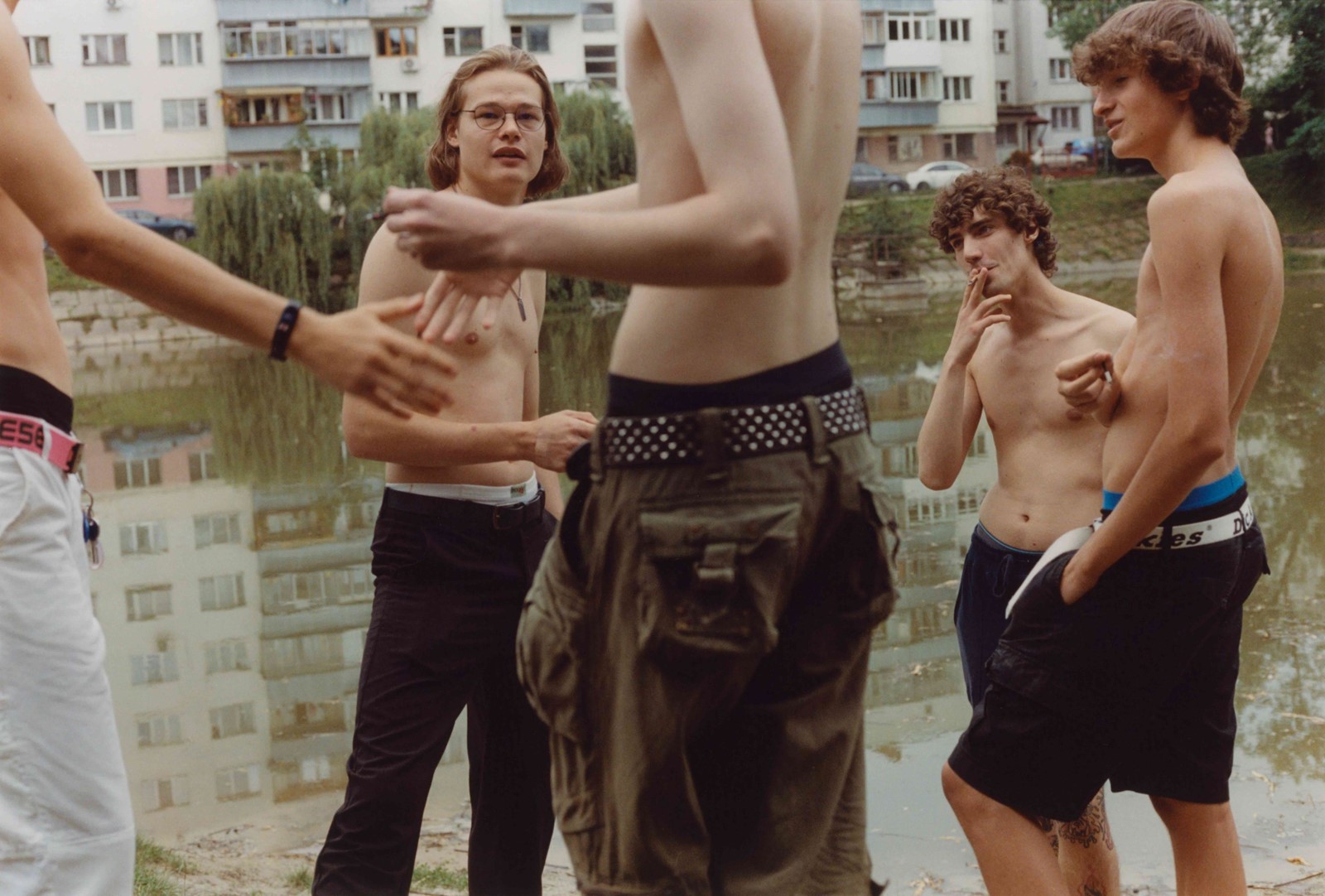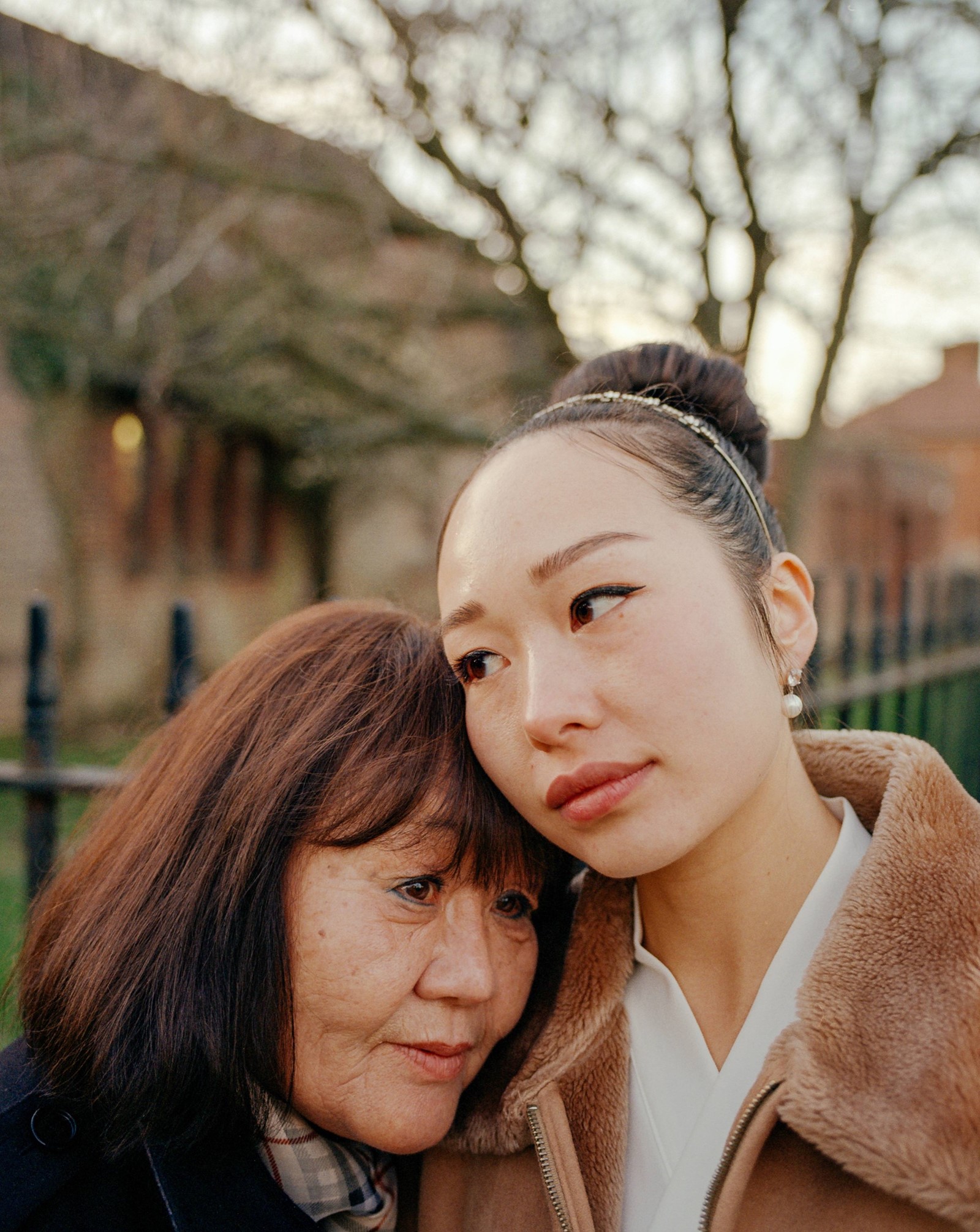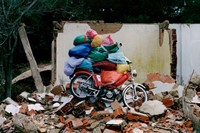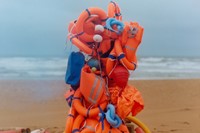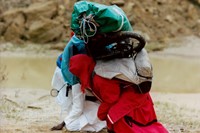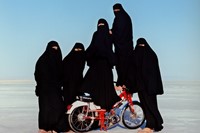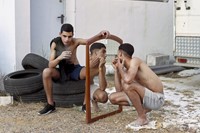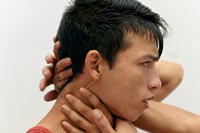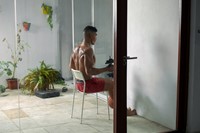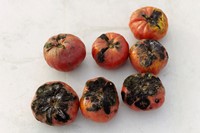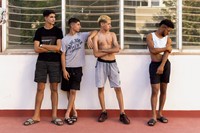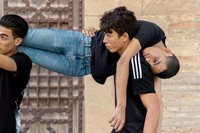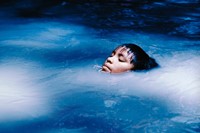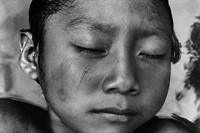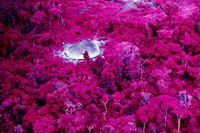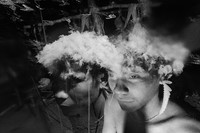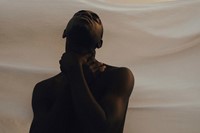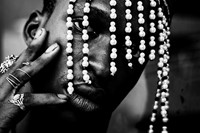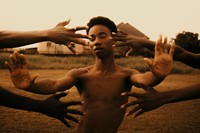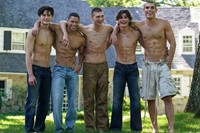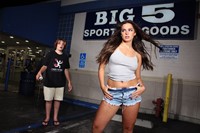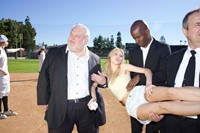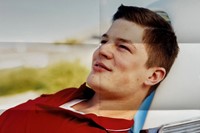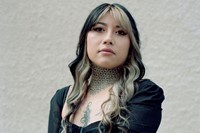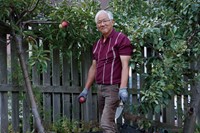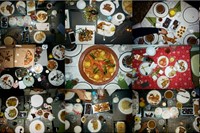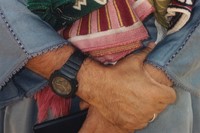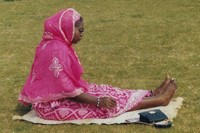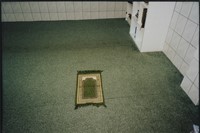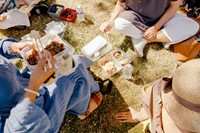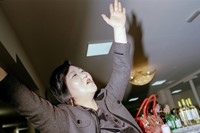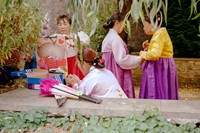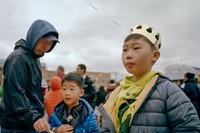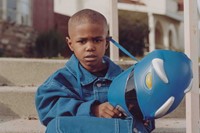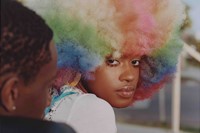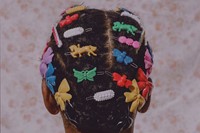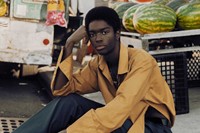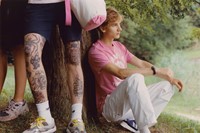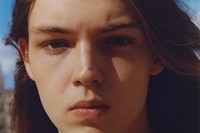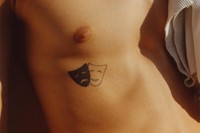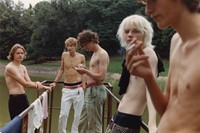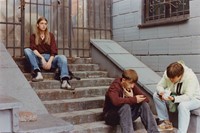In crystallising moments of community and connection, artists cut to the core of what is perhaps most beautiful about the human experience: the love, support, and togetherness that comes with being a part of something bigger than oneself. Claudia Andujar’s vivid images of the Yanomami people celebrate a unique culture based on collectivity, and advocate for political change in support of this community. In their works centred on the theme of movement, photographers Olgaç Bozalp, Felipe Romero Betran, Chan Yang Kim, and Yan Wang Preston highlight migrant groups, stirring questions surrounding the meaning of home, identity and belonging.
Family and love, too, remain strong themes within this year’s collection. Tenderness and fragility permeate Rachel Seidu’s delicate portraits of Nigerian men and Zaine Albeque’s raw, candid images of loved ones in south London around Ramadan and Eid. Different depictions of community within the same culture can be compared in Micaiah Carter’s debut surrounding Black American Life and Anonymous Gallery’s exhibition Photography Then – The American Dream, a show that depicts privilege and idolatry within American pop culture. Meanwhile, Kacper Zywicki’s photo series is a uniquely bittersweet celebration of the mundane joys of summer between Ukrainian male models preparing for an uncertain future.
Home: Leaving One for Another by Olgaç Bozalp
In Olgaç Bozalp’s exhibition and photo book Home: Leaving One for Another, the Turkish photographer narrates a story of migration through visual metaphors, as enacted by faceless characters, frequently in motion on motorbikes. “When you watch [migration] on the news, it’s never about individual identity, they’re faceless,” Bozalp says. In Bozalp’s words, the motorbikes “represent where you want to go, where you want to be,” inciting inspiration as the bikes (so commonly shared amongst families and communities in Asia) represent a sense of home, even without a roof over one’s head. Jarring and enthralling, Bozalp’s work drives home questions about movement and stability.
Read AnOther’s interview with Olgaç Bozalp here.

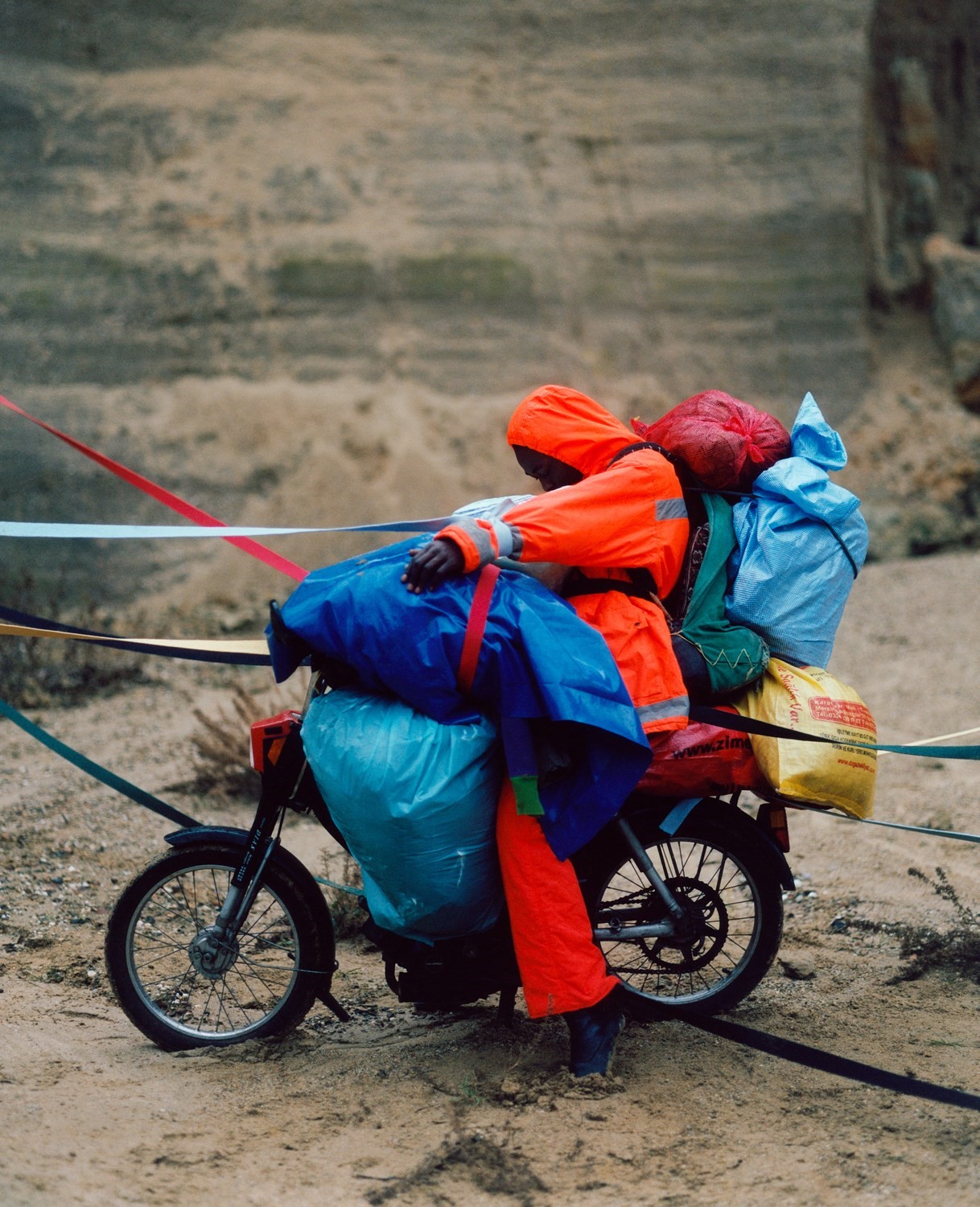
Dialect by Felipe Romero
Felipe Romero Beltrán’s Dialect chronicles his experience with a group of young Moroccan migrant men at a government-run house in Seville. “Part of the project is about reflecting the sense of closure and limbo these young men had to suddenly endure after crossing the sea for a new life,” Beltrán says. Caught in moments of camaraderie and vulnerability, these men thrived on an interdependency that kept them afloat amid uncertain times. Having photographed moments both mundane and climactic, Beltran says, “I gradually became amazed by the group’s shared brotherhood against their fragile and complicated state.”
Read AnOther’s interview with Felipe Romero here.
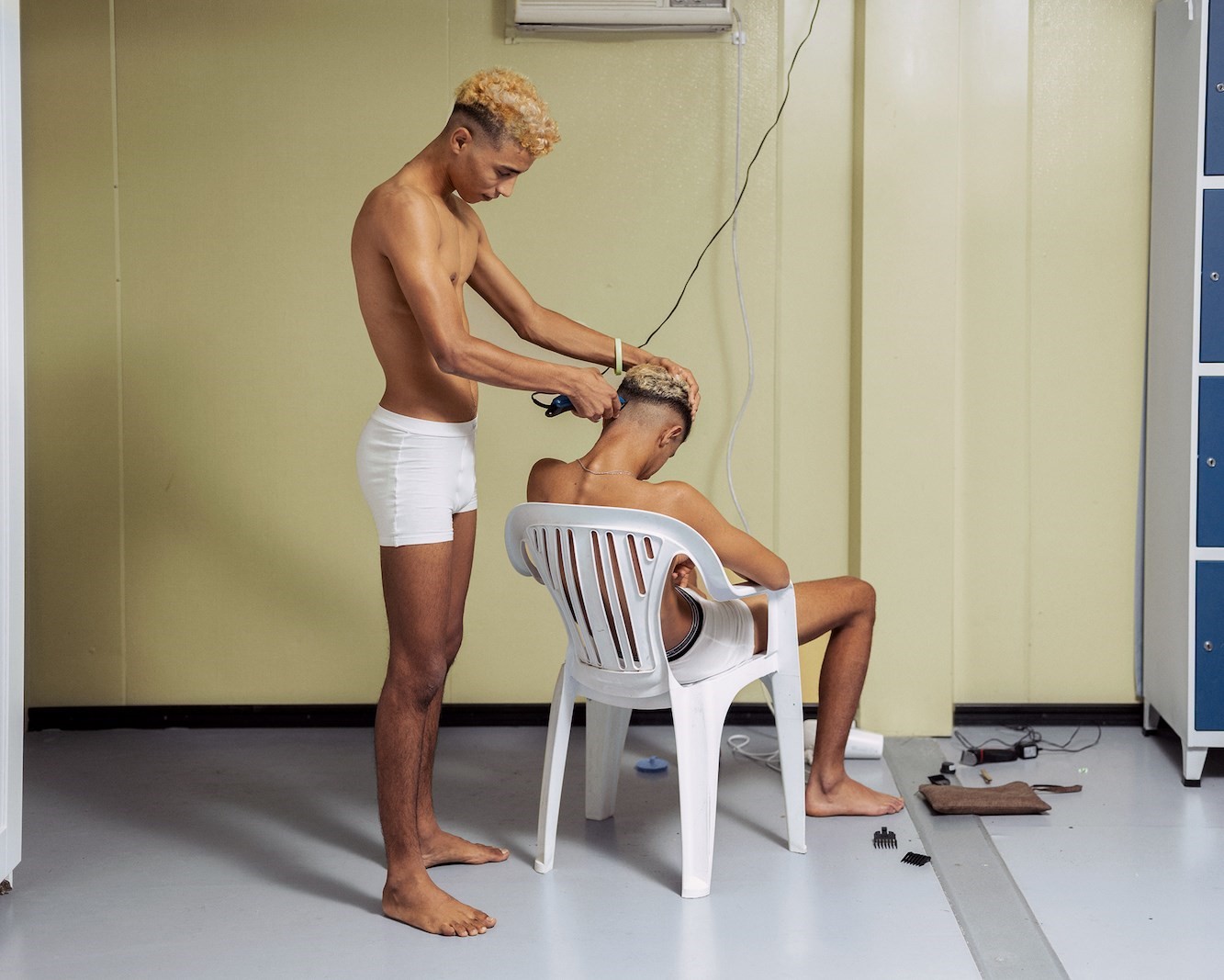
The Yanomami Struggle by Claudia Andujar
At the core of Claudia Andujar’s work for The Yanomami Struggle is the question: “Does art have the power to enact real political change?” Andujar’s vibrant images are the fruits of five decades spent photographing and advocating for the Amazonian rainforest’s Yanomami people. The artist, who notably lived in Yanomami territory for an entire year without taking a single photograph (an endeavour to build trust with people first), has produced work that is transcendent, stunning, and sharp, capturing Yanomami life with empathy and respect.
Read AnOther’s interview with Claudia Andujar here.
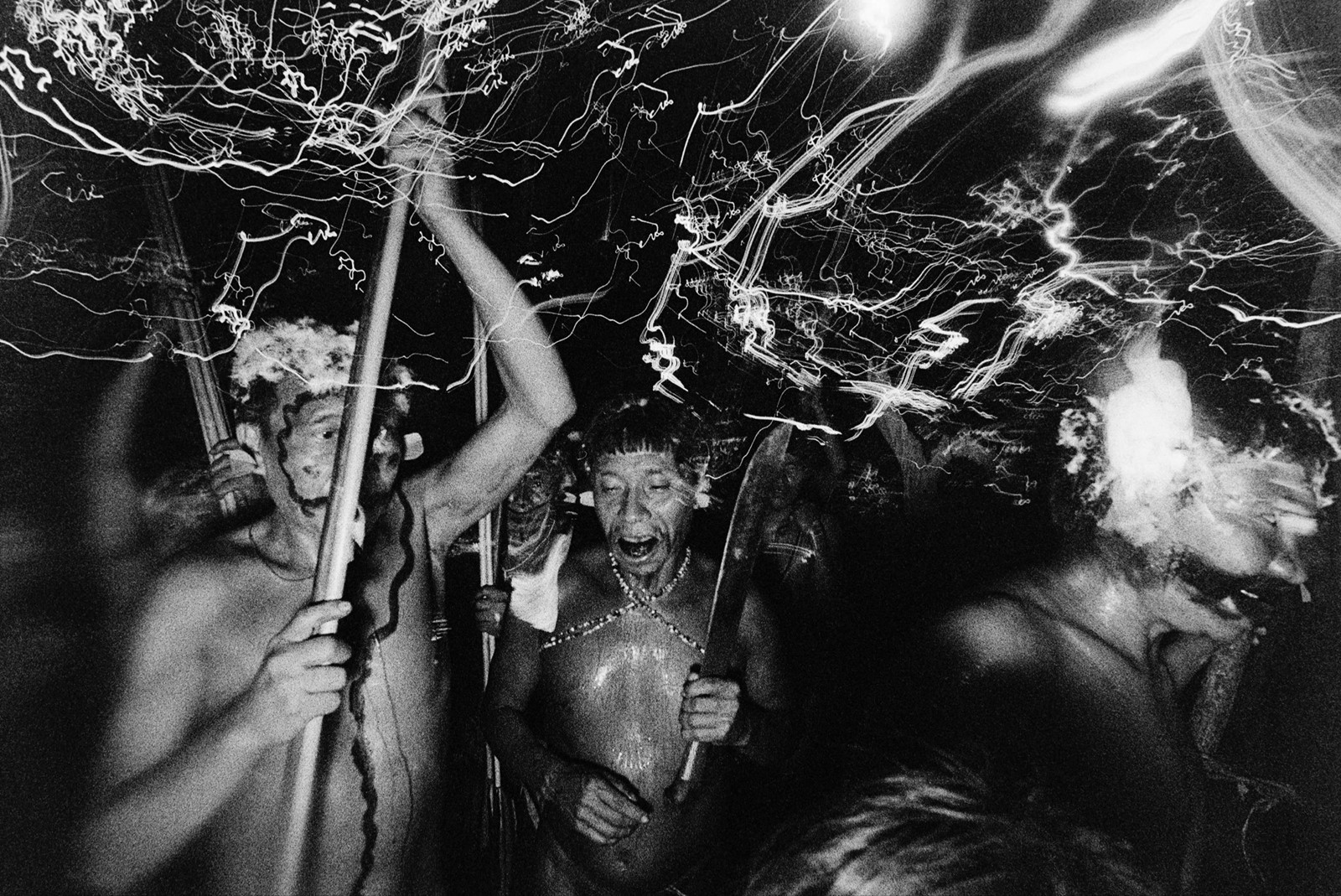
Rachel Seidu for Saint Laurent Rive Droite
Confronting the preconceived notions of masculinity in African culture, Rachel Seidu’s delicate photographs capture Nigerian men in tender, intimate portraits. Featuring in Saint Laurent’s Rive Droite Fanzine (a magazine and exhibition that offers a platform for showcasing work by up-and-coming artists – an initiative by creative director Anthony Vaccarello), Seidu’s images are lush and evocative. Her graceful, ethereal subjects demonstrate beauty within male expressions of emotion, challenging the constrictive limitations of perceived masculine stereotypes. The work is elegant and sensitive, as it highlights the lush beauty of her subjects and the emotions they convey.
Read AnOther’s feature on Rachel Seidu’s series here.
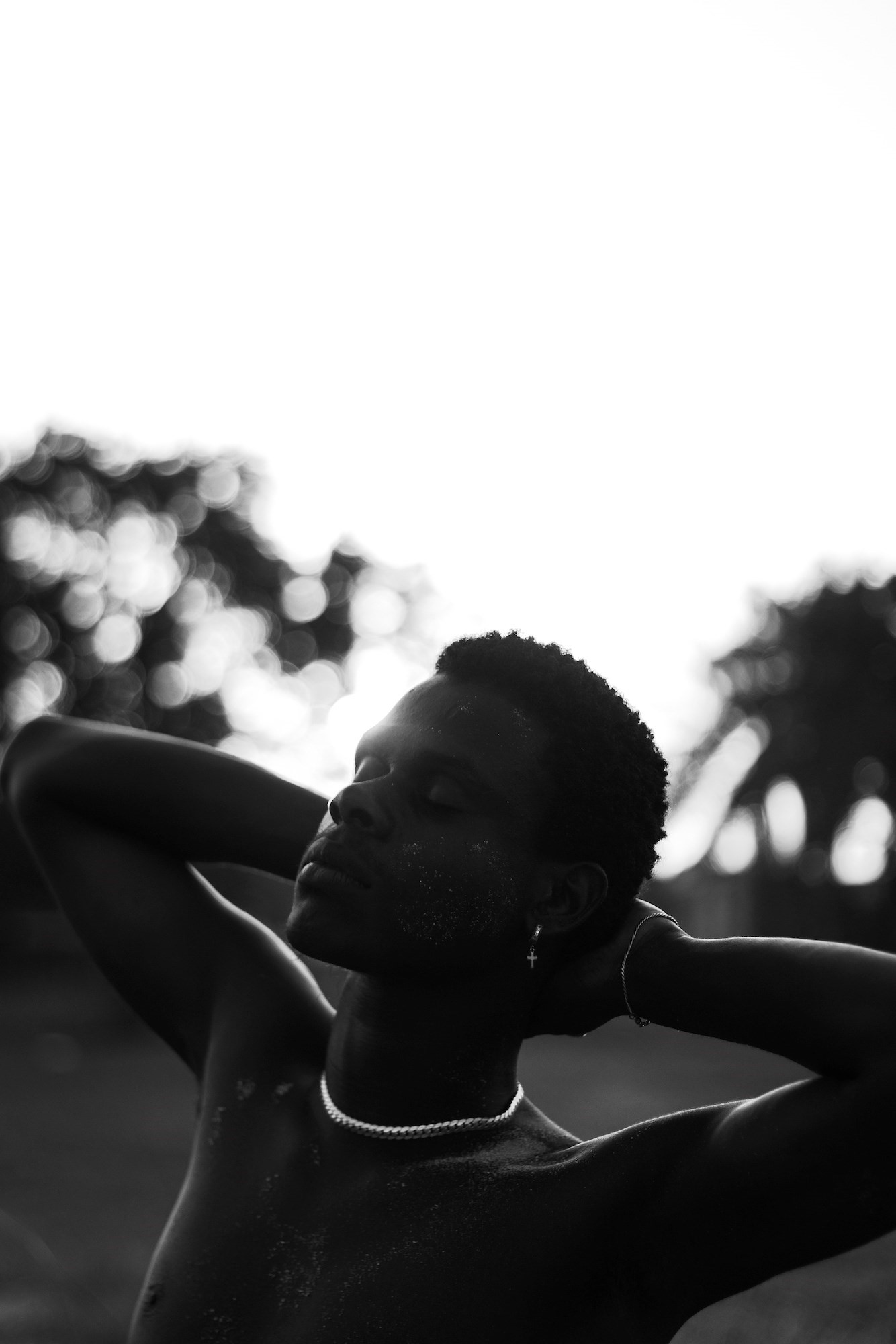

Photography Then at Anonymous Gallery
At New York’s Anonymous Gallery, group show Photography Then asks about the American dream – what does the American image look like today? Showcasing works by Buck Ellison, Jesse Gouveia, Jack Pierson, Alyssa Kazew, Chessa Subbiondo, and Thomas Polcaster from the mid-2000s to today, Photography Then emphasises the idolatry, masculinity, and racial tension found within American culture. Of the show, curator KO Nnamdie says, “This is not only my story of what I think the American dream is – it’s what the American dream that was sold to me and every other foreigner is. This is what we aspire to.”
Read AnOther’s feature on Photography Then here.
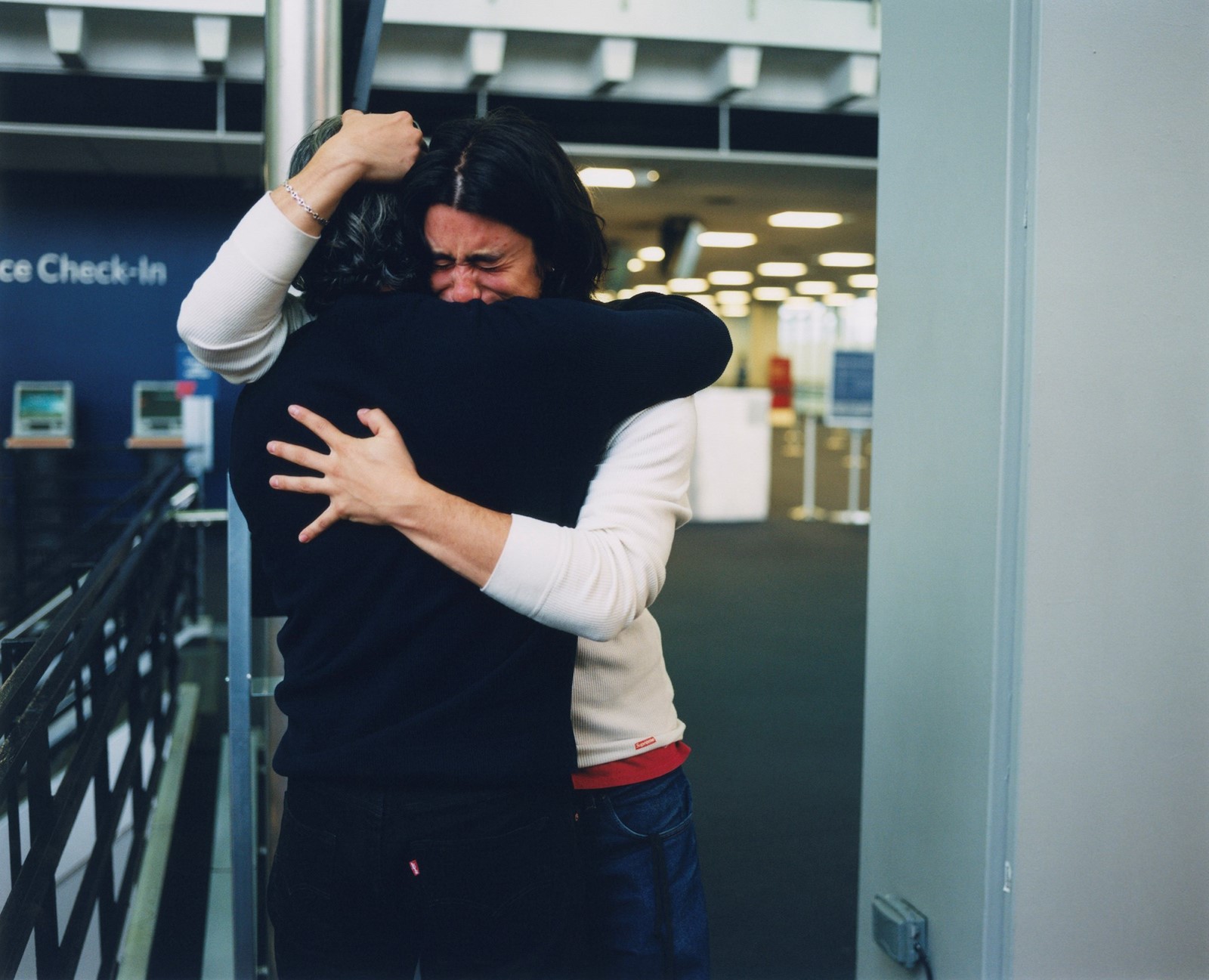
Here and Now by Yan Wang Preston
“There are many Chinese people here, but in terms of photographs, visual representations, we just aren’t there,” says Yan Wang Preston, describing her portrait series, Here and Now. “We’re visible, but invisible at the same time. I felt a responsibility to put us on the map.” Capturing British-Chinese identity with portraits of individuals and families from all walks of life, Preston’s work asserts a sense of adamant belonging as well as interpersonal connection and integration. “As people who have moved from our homelands, we all feel this mixed sense of belonging and longing.”
Read AnOther’s interview with Yan Wang Preston here.

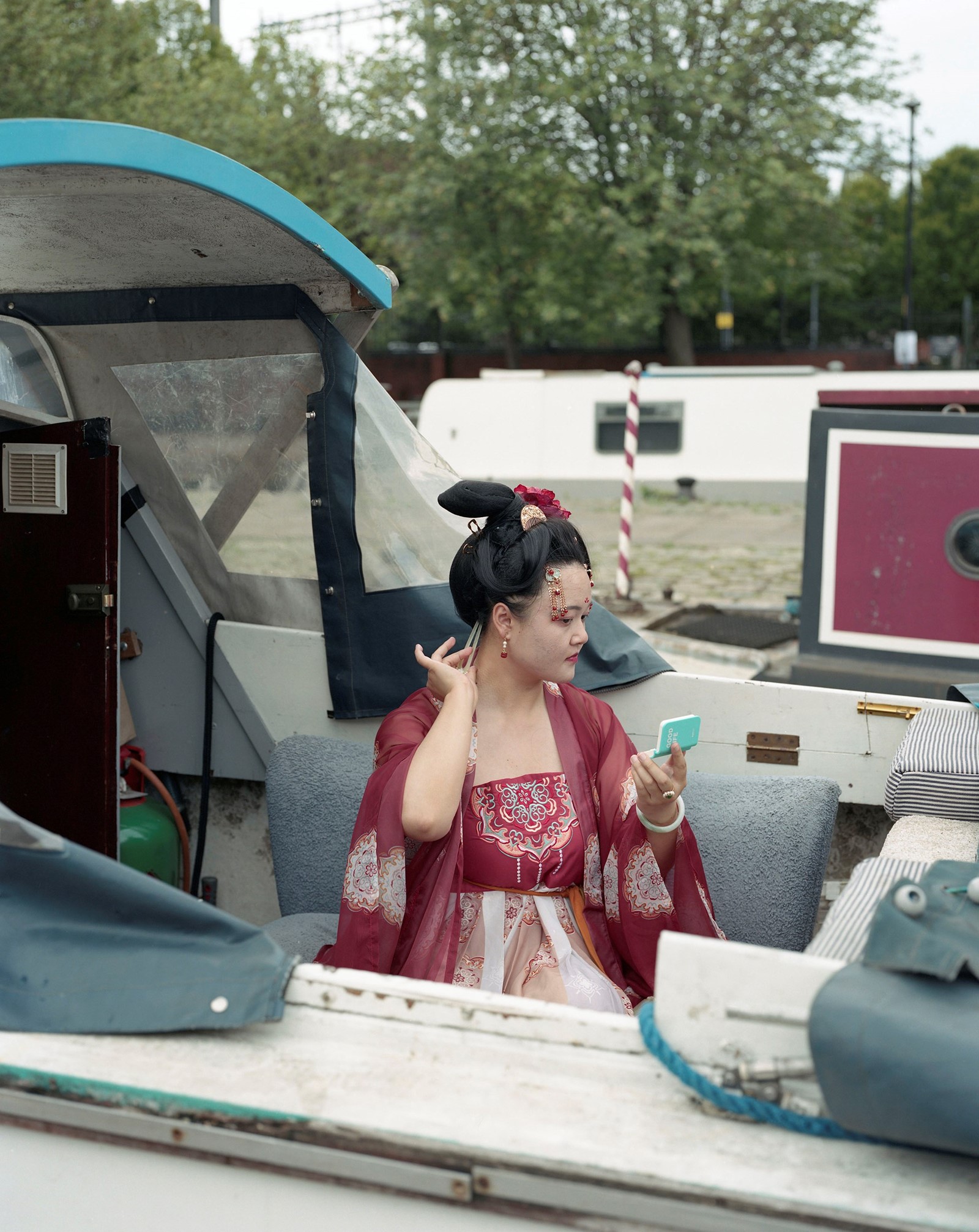
Inside, Outside by Zaineb Abelque
In her solo exhibition Inside, Outside, Zaineb Abelque captures her loved ones and immediate community during Ramadan and Eid in south London. “I want everything I do to be rooted in people and for it to be candid and honest,” Abelque says. Photographing deeply personal moments shared between friends and family during a sacred and introspective time in the artist’s Islamic faith, Abelque reflects on unity and meaning.
Read AnOther’s interview with Zaineb Abelque here.
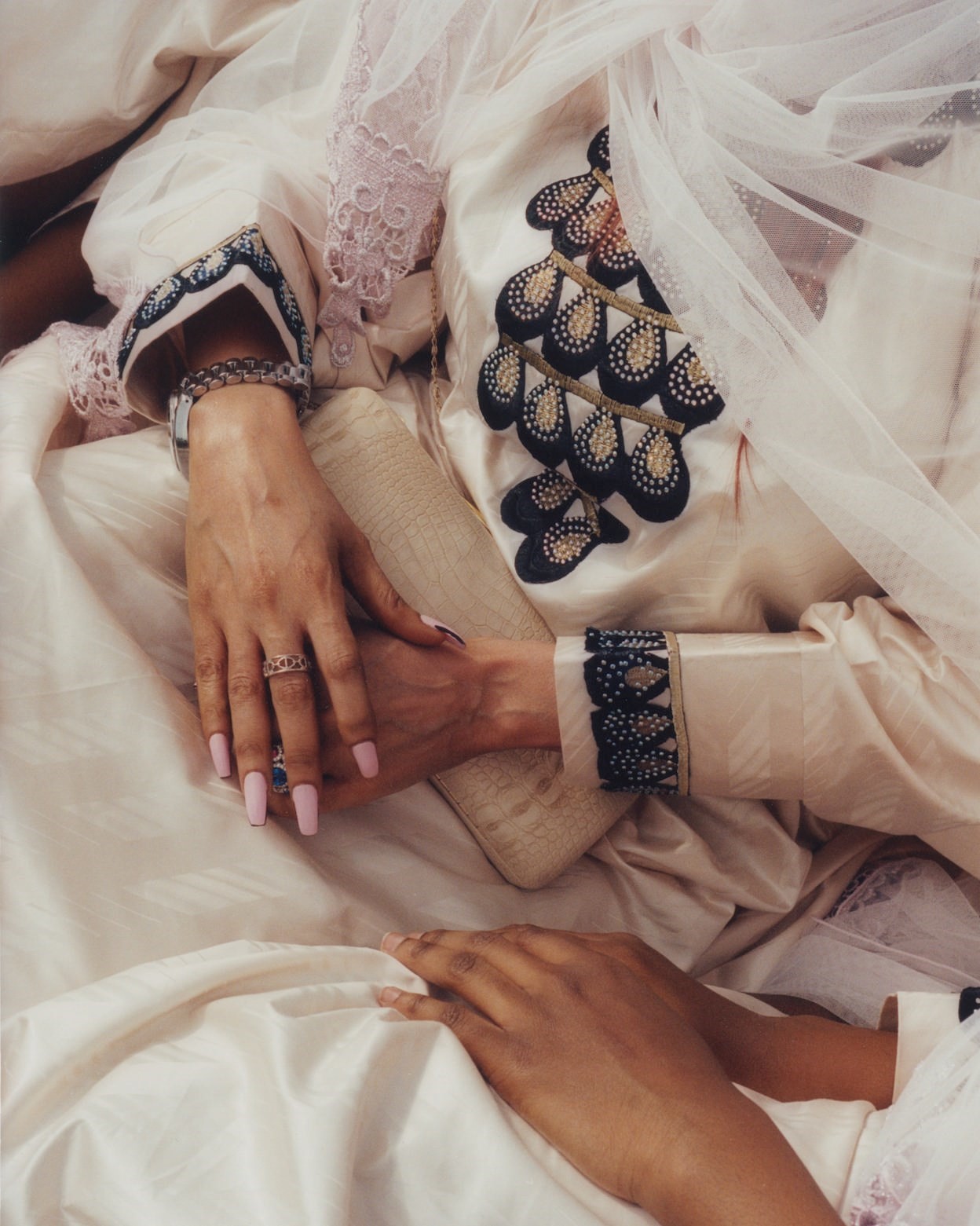
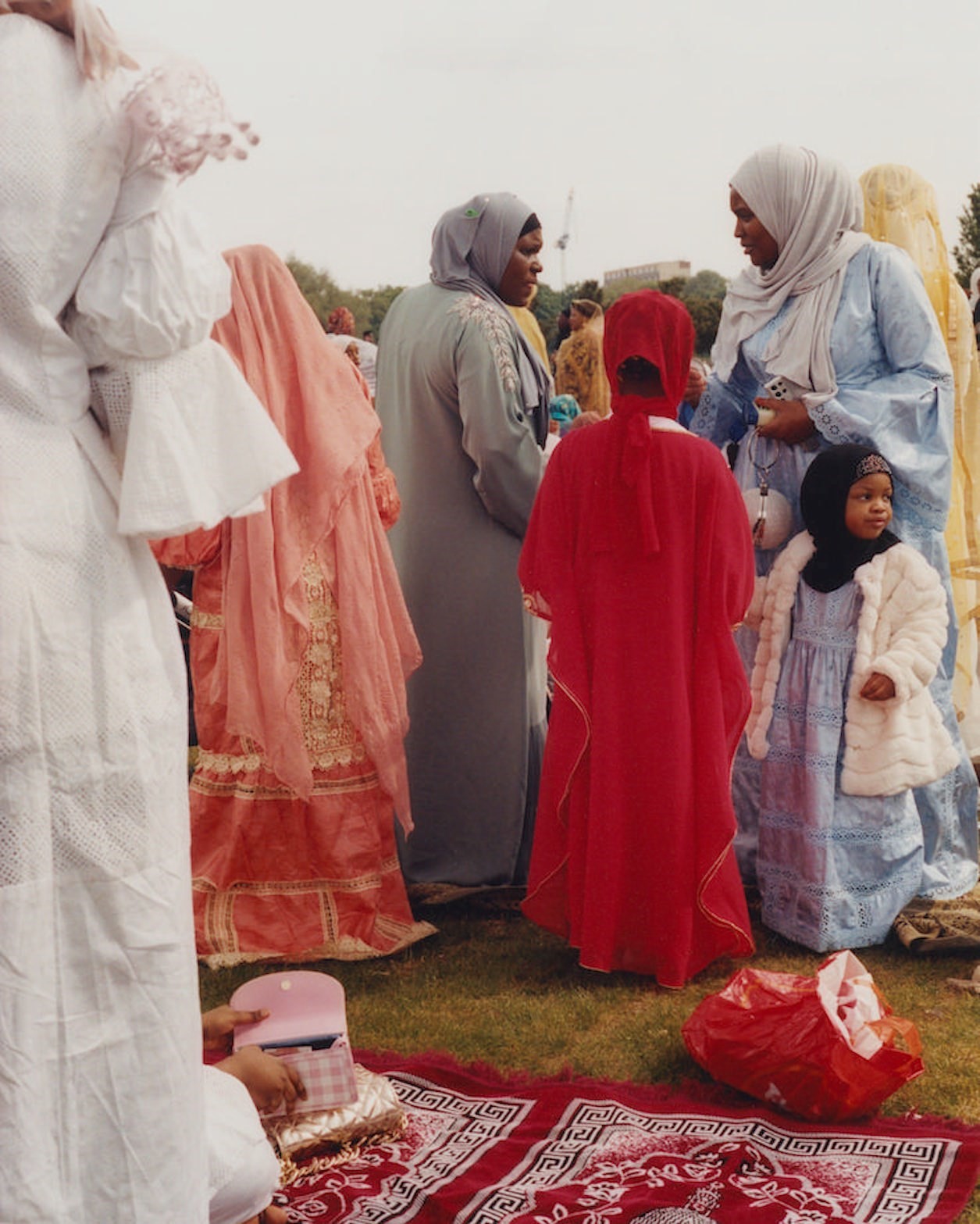
Dongpo by Chan-Yang Kim
“I like the idea of concentrating on the absolutely banal things,” says Chan Yang Kim of Dongpo, his photo project on the Korean expatriate community in London. Dongpo highlights the quiet moments: chopsticks hovering over picnic lunches, elders dressed in traditional hanbok, personal photos of a baby being bathed in a tub by both parents from Kim’s family archive. The series captures a tender nostalgia and camaraderie deeply relatable to those in the Korean diaspora; on shooting this community, Kim says, “It was very welcoming and hopefully my pictures show that warmth.”
Read AnOther’s interview with Chan-Yang Kim here.
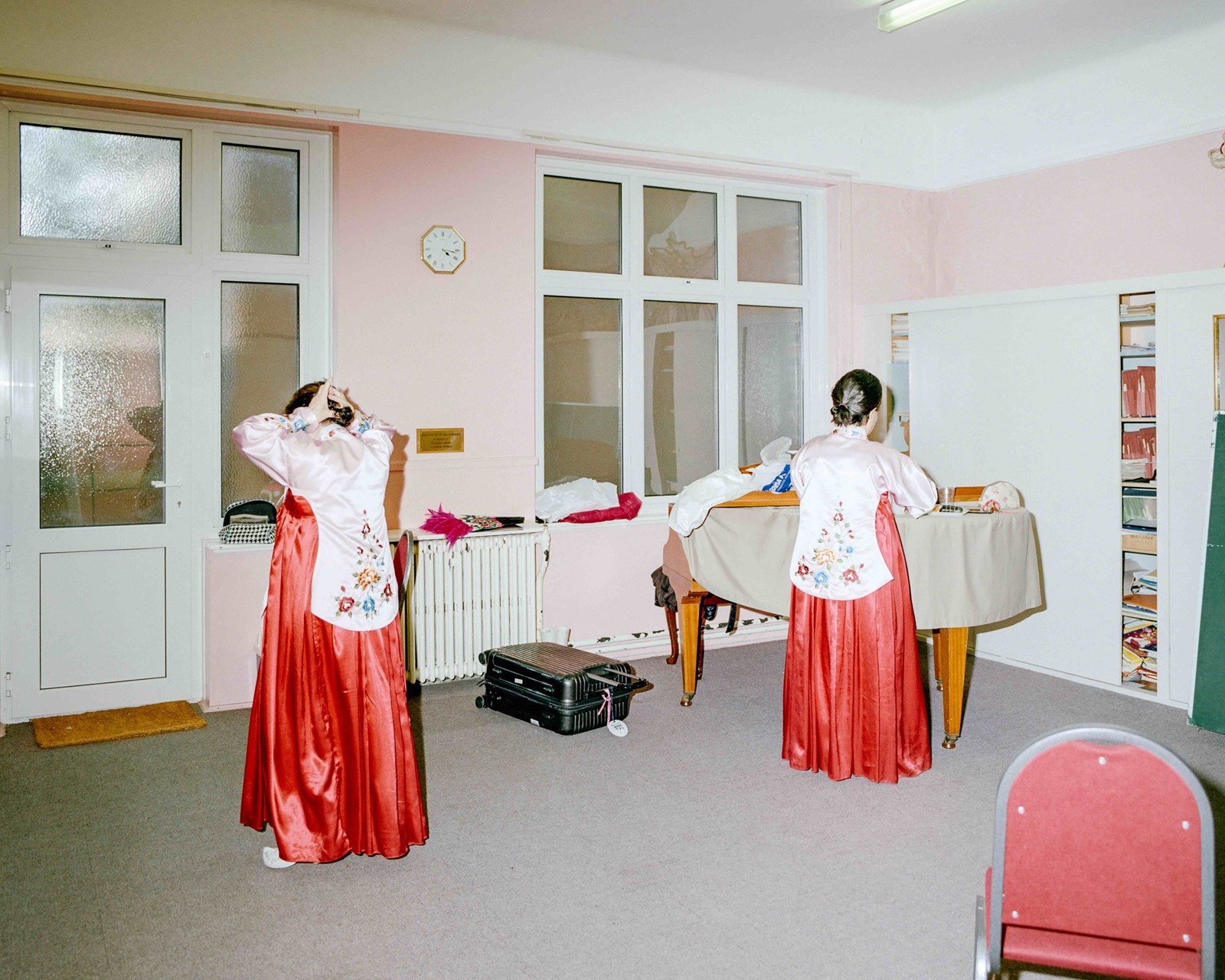
What’s My Name by Micaiah Carter
Inspired by the family photo albums that captivated him as a small child, Micaiah Carter’s debut book celebrates Black American life. In Micaiah Carter: What’s My Name, the renowned fashion photographer creates a commemorative album of his own, combining his own contemporary work with actual family photos. Influenced by his father’s use of the photo album as a space to memorialise connection and communion across the generations, Carter weaves together his own personal and commercial works; images of close relatives and acclaimed celebrities highlighting the beauty of Black American culture.
Read AnOther’s interview with Micaiah Carter here.
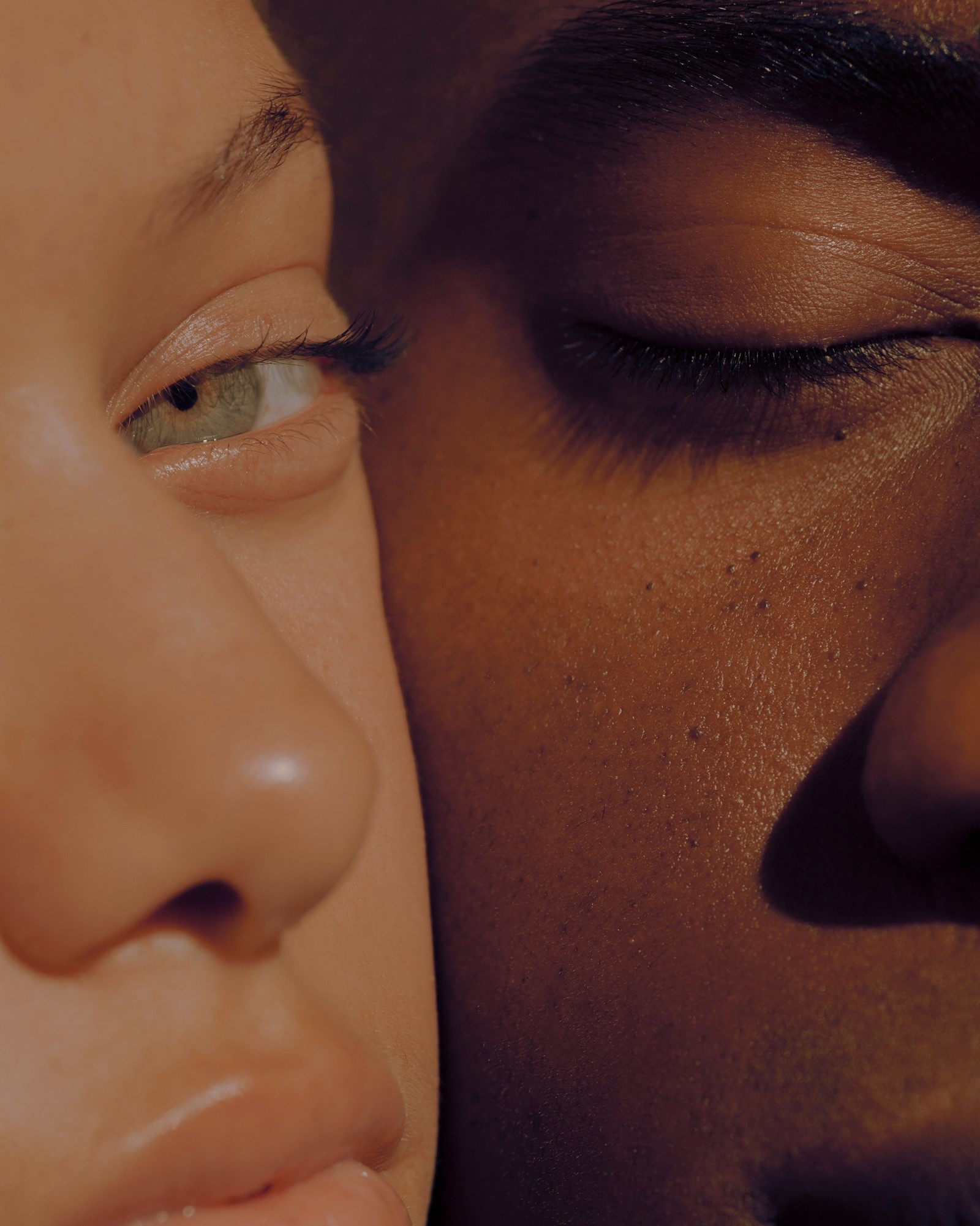
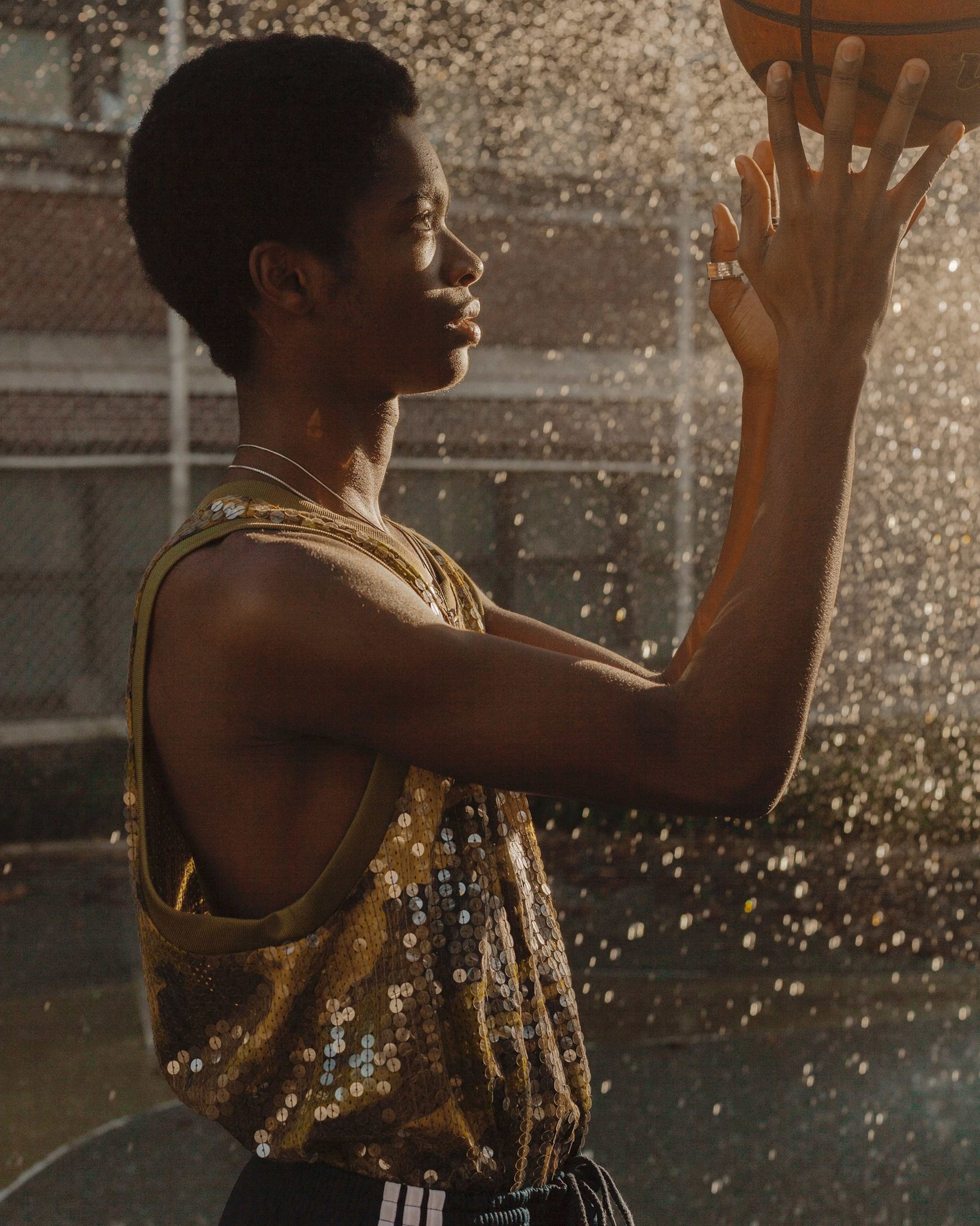
Last Summer by Kacper Zywicki
“When I came to Ukraine, it struck me how many amazing people are being lost or excluded from the fashion industry because of the war,” says Kacper Zywicki, explaining his portrait series of Ukraine’s male models. Initially brought together by their agency, now they’re bonded by their fates, as they await conscription for the war. “What really impressed me was the relationships between these young men, who had all become close friends at the same agency.” United by uncertainty, Zywicki’s subjects revel in the bittersweetness of what feels like their last summer.
Read AnOther’s interview with Kacper Zywicki here.
